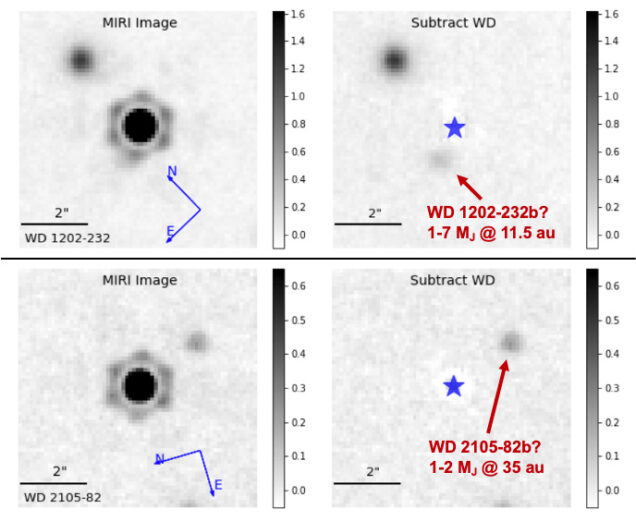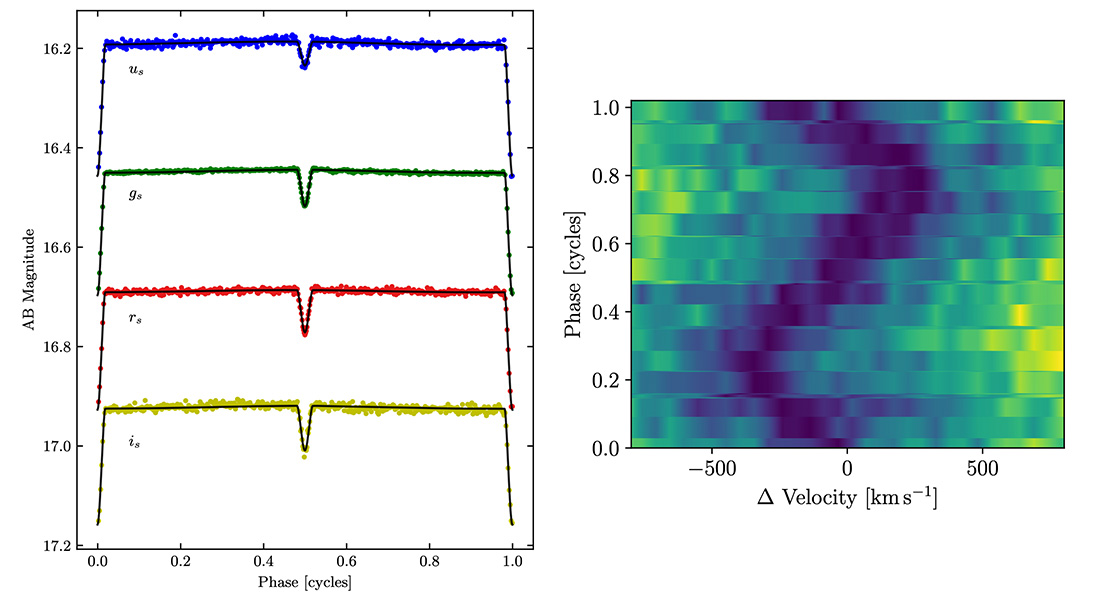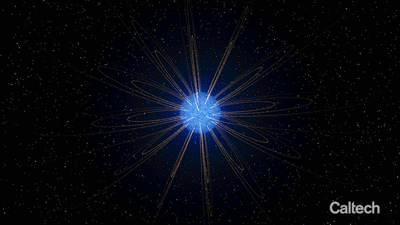The BU White Dwarf Group

Welcome to the home page of the BU White Dwarf group, headquartered a few blocks from Fenway Park in Boston, MA, USA.
Our research focuses on white dwarf stars and their connection to the endpoints of stars, binary, and planetary systems. Our work is supported by Boston University, the Institute for Astrophysical Research, the National Aeronautics and Space Administration (NASA), the National Science Foundation (NSF), and the Massachusetts Space Grant Consortium.
Recent news and group updates:
Research updates can be found below and on the news page.
JWST directly images two giant planet candidates

In January 2024, a manuscript led by Susan Mullally from Space Telescope Science Institute and including members of the BUWD group (Mullally et al. 2024) announced that JWST has directly images giant planet candidates around two metal-polluted white dwarf stars. The two planet candidates (JWST/MIRI images shown above) are consistent with 1-7 Jupiter-mass planets on orbits that would have been similar to Jupiter or Saturn in our solar system before the host star lost mass to become a white dwarf. JWST has improved our sensitivity to such planets by an order of magnitude. If confirmed to move with the white dwarf (although unlikely, in each case the point source could be a background galaxy), these would be the oldest directly imaged exoplanets ever found, and would be direct evidence that giant planets like Jupiter survive the evolution of their host star. Because they orbit white dwarf stars, we can get reasonable estimates on their ages: WD1202-232b is likely close in age to our Sun (~5 billion years old), and WD2105−82b is between 1.4-2.4 Gyr. Some nice press coverage of the discovery was published by Science Magazine as well as Universe Today. The manuscript has been accepted in The Astrophysical Journal Letters.
USRA Distinguished Undergraduate award
Former BU White Dwarf researcher Madi VanWyngarden, who worked with us in Summer 2021 and helped with our discovery of many new pulsating white dwarfs in TESS, has recently been honored with a 2023 Universities Space Research Association (USRA) Distinguished Undergraduate Award. Madi is one of only five recipients of this year's award, and the first ever from Boston University!
A 23-min binary in TESS
In November 2023, a manuscript led by Matthew Green from the Max-Planck-Institut für Astronomie in Heidelberg, Germany and including members of the BUWD group (Green, Hermes, Barlow et al. 2023) announced the discovery of the shortest-period binary system yet found by NASA's Transiting Exoplanet Survey Satellite (TESS)! Although TESS is tuned to finding transiting exoplanets, we used the facility to discover a pair of stars orbiting one other roughly every 23 minutes, one of the brightest (and closest) AM CVn binaries ever found. This is the second system we have recently found from TESS that will be detectable in gravitational wave radiation when we launch space-based interferometers in the coming decades. The manuscript has been accepted for publication in the Monthly Notices of the Royal Astronomical Society.
TESS’s first gravitational wave source

In August 2023, a manuscript led by James Munday from the University of Warwick and including members of the BUWD group (Munday, Tremblay, Hermes, et al. 2023) announced the discovery of an eclipsing, 47.19-min double-white-dwarf binary first identified by NASA's Transiting Exoplanet Survey Satellite. The pair of stars are massive enough (0.40 and 0.28 solar masses) and close enough (separated by roughly the distance from the Earth to the Moon) that they are an extremely strong source of gravitational radiation, ripples in the fabric of space. The system is likely the first binary identified by the TESS mission that will in the future have its gravitational wave radiation directly detected by the LISA space mission. The manuscript has been published in the Monthly Notices of the Royal Astronomical Society.
A two-faced white dwarf

In July 2023, a manuscript led by Ilaria Caiazzo from Caltech and including members of the BUWD group was published in Nature announcing the discovery of an enigmatic new star: a white dwarf that is entirely composed of hydrogen on one side and helium on the other. Every 15 minutes the star rotates once on its axis, showing both its hydrogen and helium faces; we nicknamed the star "Janus" after Roman mythology. We believe the chemical stratification is likely related to a small magnetic field and a very thin layer of hydrogen on the star, but it remains a relatively unsolved problem. The discovery was published in the July 19 2023 issue of Nature and included press coverage from Sky & Telescope, The Guardian, and Space.com.